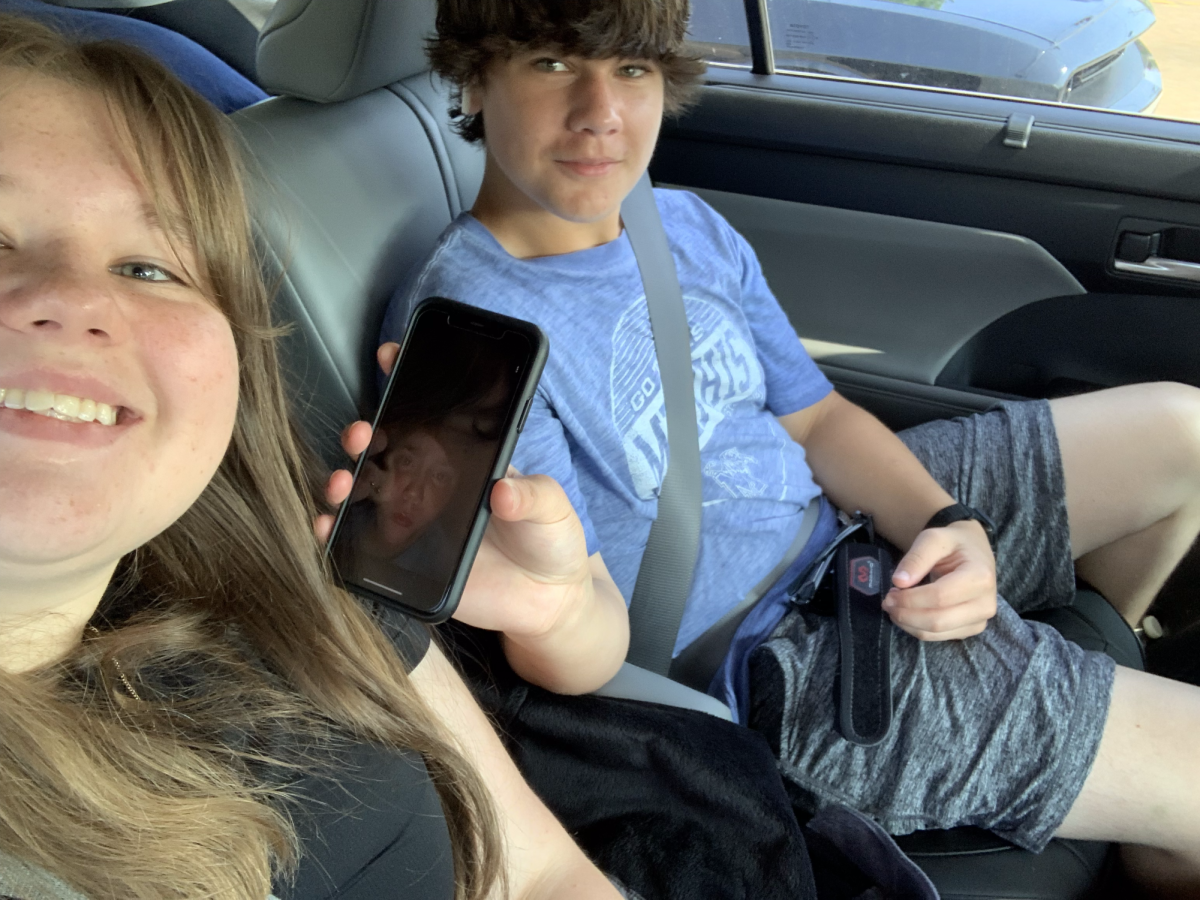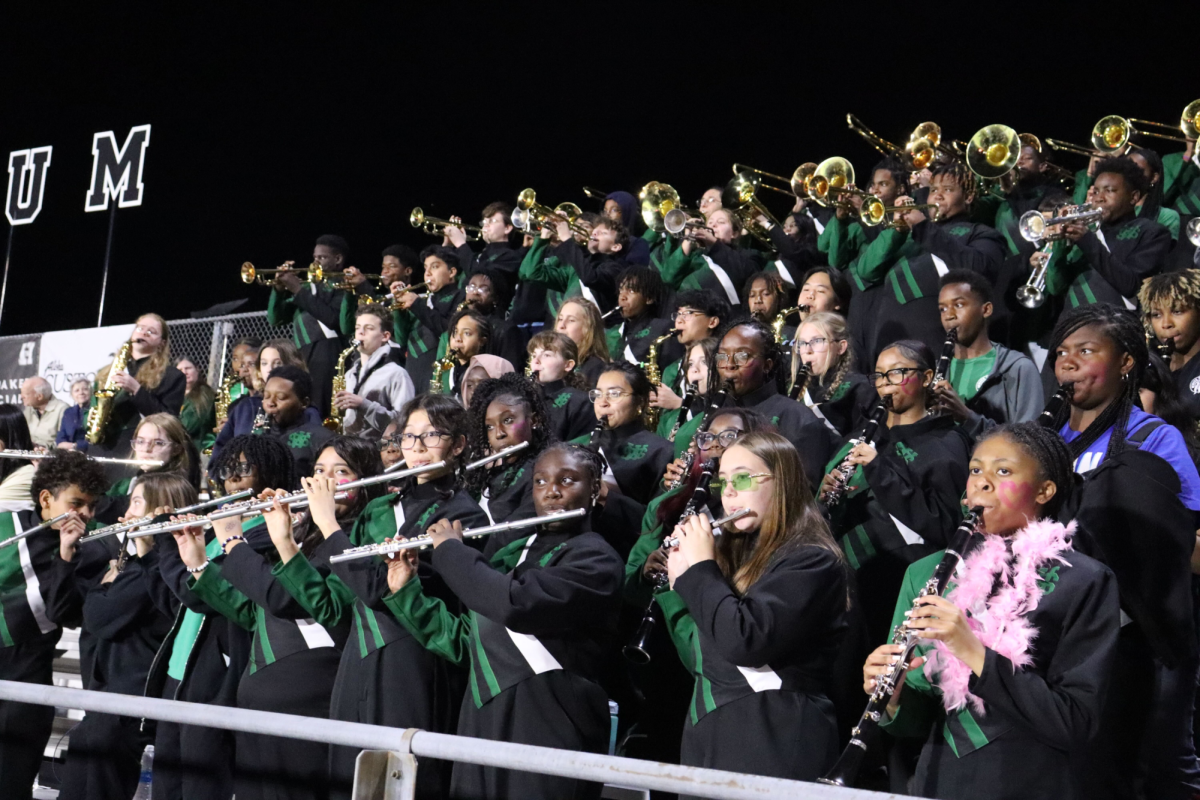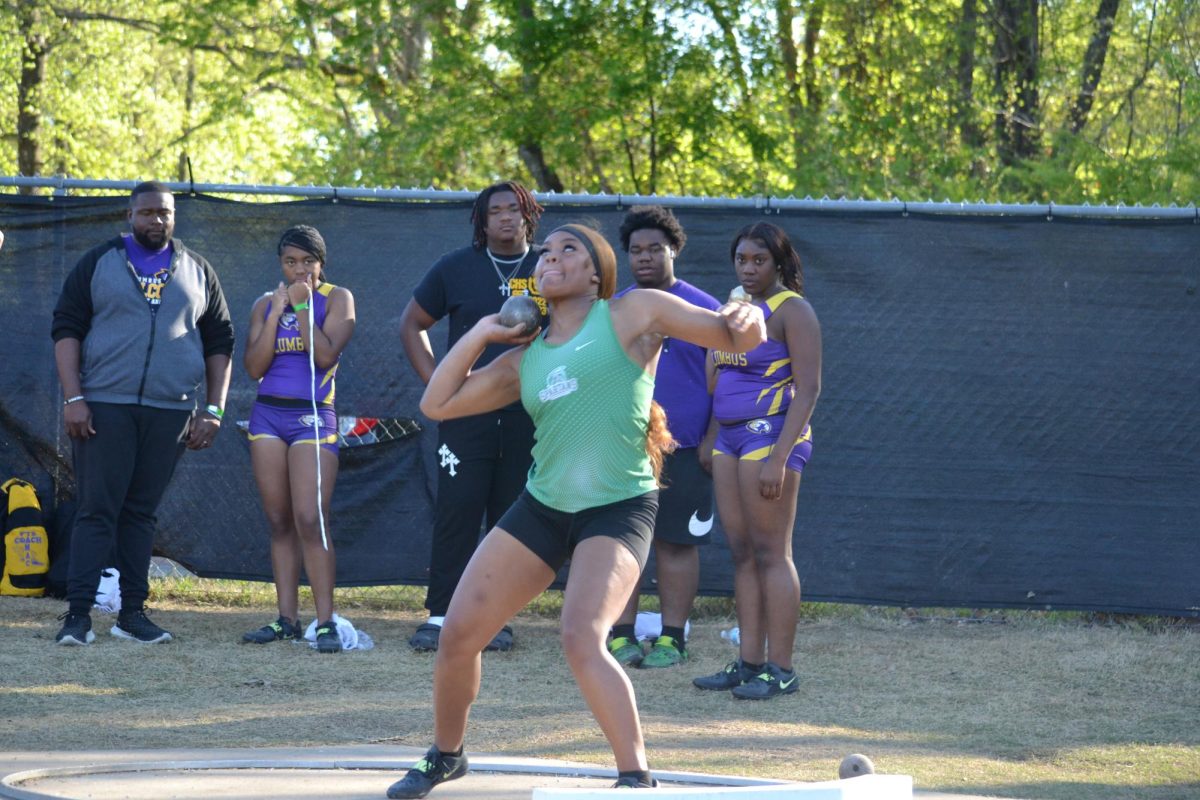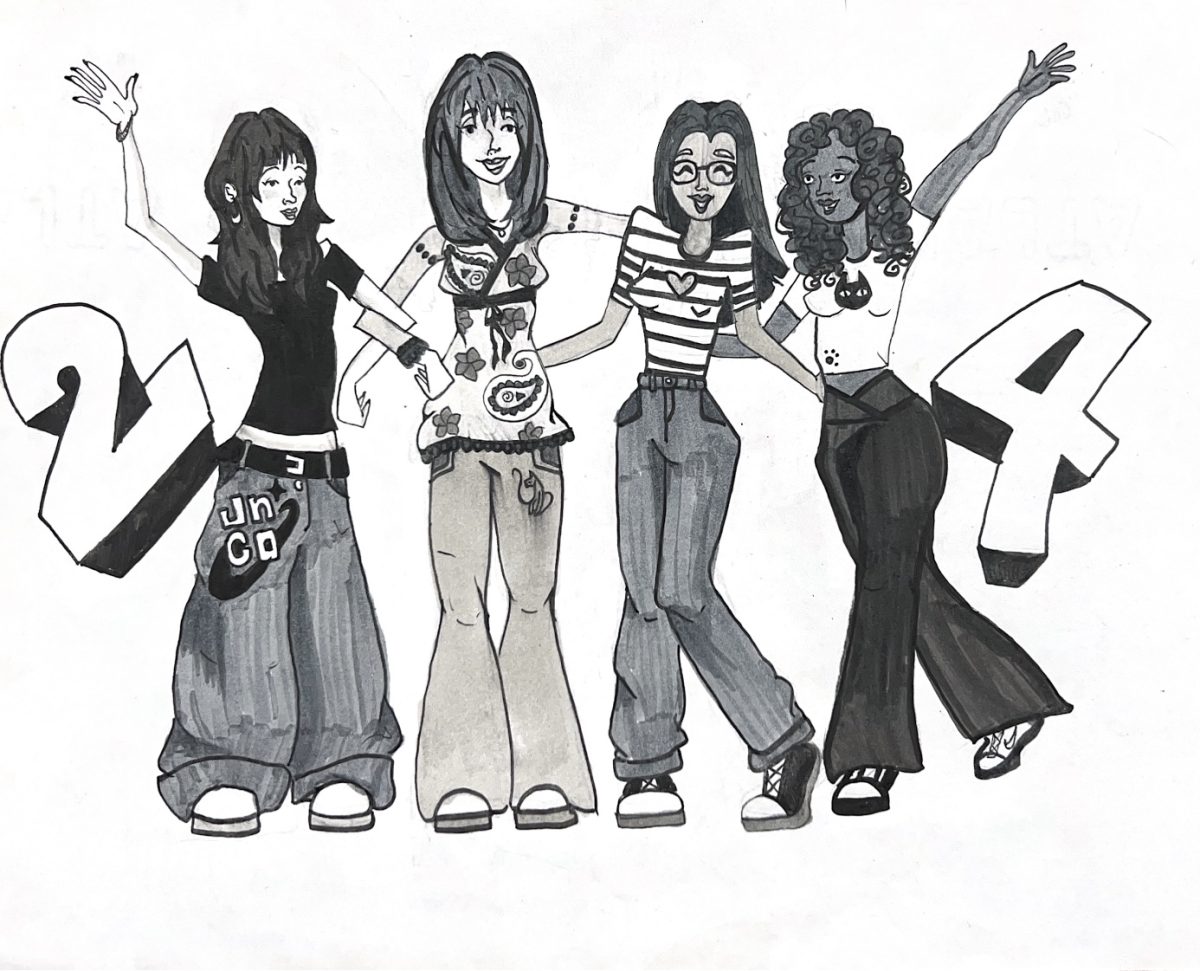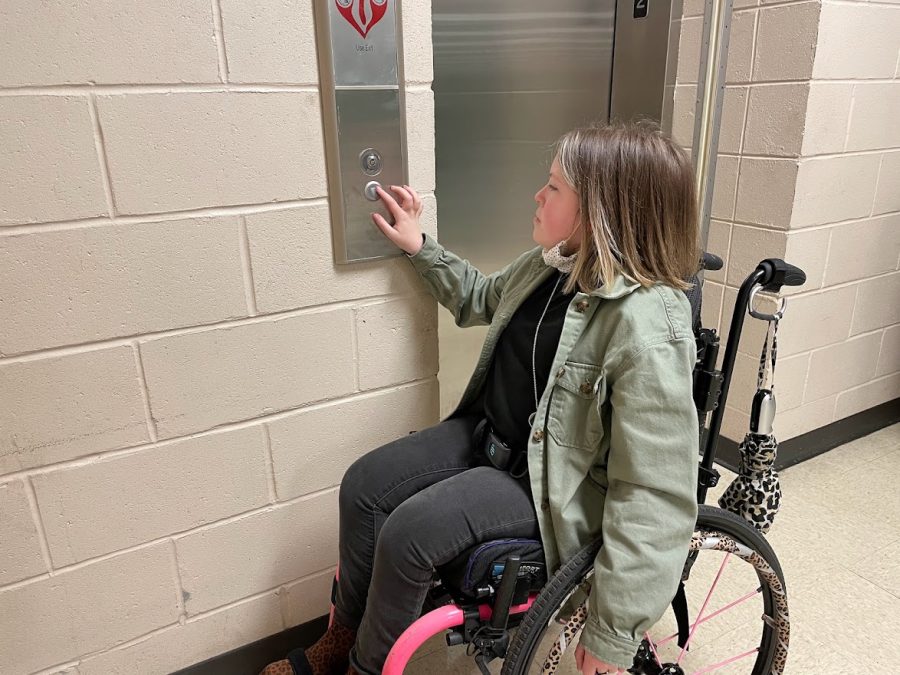Let’s roll: accessibility at White Station
Getting ready to transition to her next class, Annabelle Hulgan (11) presses the elevator button to go down to the first floor. At White Station, there are two elevators — one located in the Main Building and the other in the Freshman Academy.
The crunch of wheels pressing onto wood. The grit of determination. Sweat trickles down one’s cheek. The ship is ready to set sail — the destination being the end of an unstable, unforgiving ramp. The captain is struggling to navigate through the harsh waves of a school with limited wheelchair accessibility. These unsung heroes can be seen wheeling around school, but what are their stories?
At White Station, aids are provided and paid by the school to help disabled students. Their sole purpose is to tend to the needs of their designated student and to make that student feel more comfortable at school by helping them maneuver through the buildings.
“She can help other people, but she’s assigned to helping me — helping me to do my work, helping me to get from one destination to the other on time,” Annabelle Hulgan (11) said. “She picks me up in the mornings from my mom, she brings me to [my classrooms], she follows me all around the building. … If a fight was breaking out in the cafeteria, I wouldn’t know how to get out safely.”
In order to have access to the elevators, one must obtain an elevator key that can only be given by administrators in the main office. Students needing to use them will be asked to hand in something in exchange that can be retrieved at the end of the day to ensure the key is returned, but many express discontent for the lack of accessibility to these elevators.
“I feel like there are some adjustments that [White Station] can make to make it a little bit easier [for disabled people], such as making more elevators,” Alexandru New (10) said. “There are only two elevators and they are kind of far apart. On top of that, [there is a] shortage of elevator keys. The school should make more of them to make it more accessible to people.”
On numerous occasions, the elevators at school will experience malfunctions. Because there are only so many elevators, these minor inconveniences make huge impacts.
“I would have to take the stairs, so it would slow me down a lot,” Emmy Yang (10) said. “Just because you have to go step by step with your crutches and sometimes the crutch will miss a step and you just kind of fall a little bit. And it just takes a longer time to do things.”
Getting through the crowded hallways between classes can be challenging. Having to factor in being in a wheelchair on top of that seems almost impossible. Those who are disabled are granted the privilege of leaving class a couple of minutes early to avoid student traffic and the chaos that ensues in the hallways.
“I need [these privileges] because I’m in a wheelchair and getting from class to class with all the kids and being in a wheelchair is hard,” Hulgan said. “Some of these kids are always on their phones. And I’ll say, ‘Excuse me, excuse me, excuse me,’ but they don’t listen. And then my assistant will have to raise her voice.”
Outside the main building, splitting from the bustling Poplar streets, a driveway exists to accommodate for disabled students. While the creation of this driveway holds pure intentions, the users of it often do not align with the intended audience.
“[The school has] built a parking lot for people to get their wheelchair kid out,” Hulgan said. “But some people think it’s like a carpool lane, [however] it’s not a carpool lane. It’s for kids who have a disability and then have a wheelchair. … And I think [the school] should put an emphasis that it’s for parents that have a kid with special needs and not a kid that doesn’t have special needs.”
Many people at White Station have the luxury of being able to walk around school without needing additional support from a person or object. Some may never understand what being disabled is like, but knowing the situation of accessibility at school is important toward making changes for the better.
“[Being on crutches] makes you realize things you take for granted, just having use of both of your arms and both of your legs are things that not everyone can use,” Yang said.
Your donation will support the student journalists of White Station High School. Your contribution will allow us to purchase equipment and cover our annual website hosting costs.



